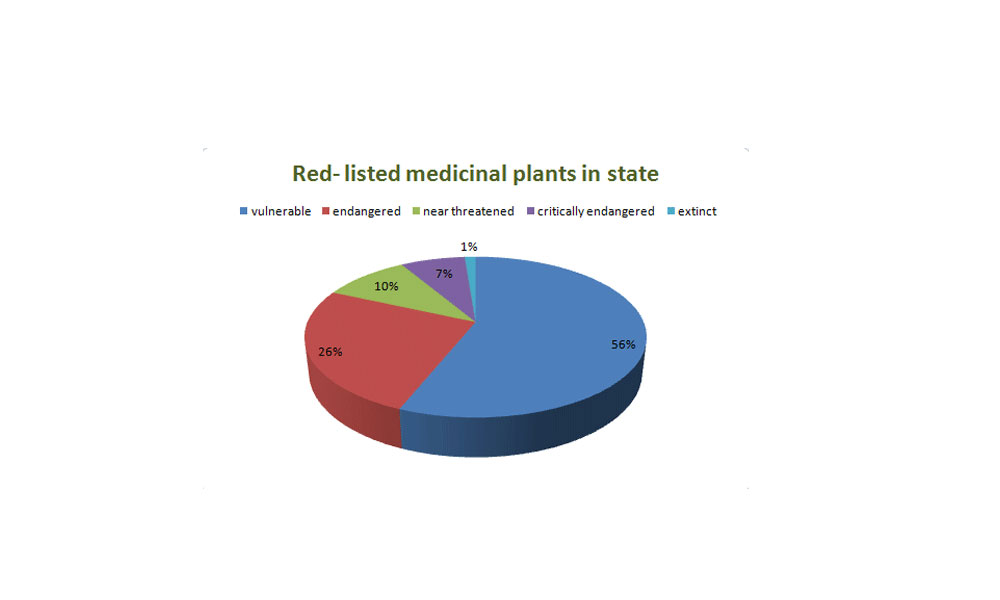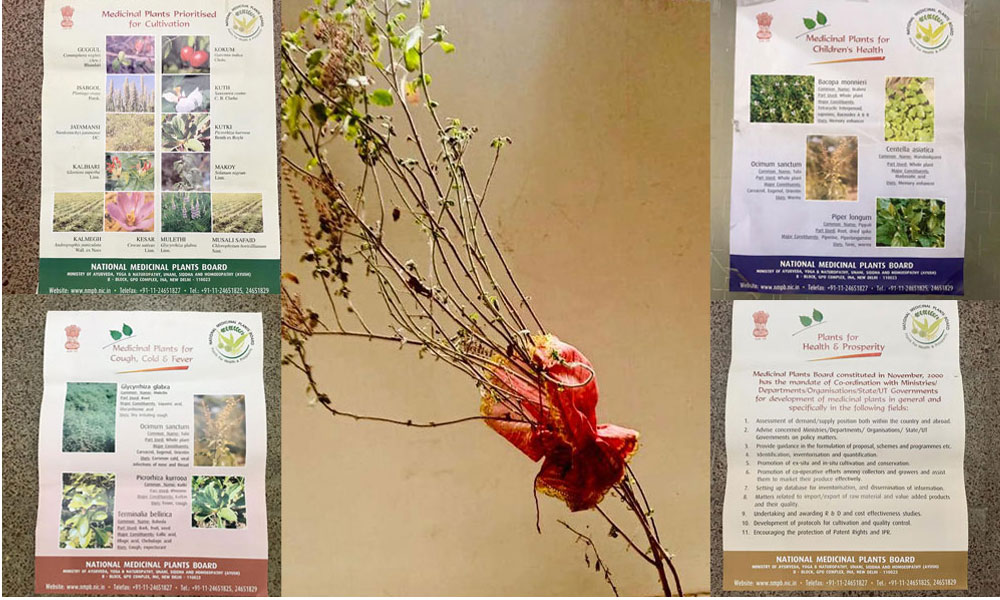Medicinal plants are being chopped by the axe of commercialization and unsustainable harvesting, and are thus facing the threat of extinction.
By Manasvi Gupta
Herbal shampoo, creams, medicines, tea, even cigarettes—going ‘organic’ is the new cool. But the irony is that the organic may be on the verge of extinction itself because of deforestation and destructive harvesting.
The International Union for Conservation of Nature (IUCN) has released a red list where around 647 plant species are under threat in India and 30 species are critically endangered—most of which are herbs used for medicinal use.
However, in the state, The Karnataka Biodiversity Board (KBB) said that around 1493 species of medicinal plants are found. The Botanical Survey of India officials gave a tentative number saying around 100 species are included in the RET (rare, endangered, threatened) list for Karnataka.

The roots, fruits, leaves, barks, and twigs—every part of them is useful in one way or the other. Neeraj Rani, a Bachelor of Ayurvedic Medicine and Surgery (BAMS) doctor said, “Medicinal plants are the basis of Ayurvedic medicines and their exploitation has led to the scarcity of raw material. Due to this now doctors have to look for other substitutes, which tend to make the medicine less effective.”
“It’s like if we consume wheat, we grow it back in appropriate quantity to consume again, so should be the case with these plants too,” she added.
Various acts like Section 23 of the Biological Diversity Act, 2002 and the Karnataka Biological Diversity Rules, 2005 focus on conservation of biodiversity, sustainable use of its components and organizing a comprehensive program for the same.
The Karnataka Medicinal Plants Authority (KaMPA) official expressed his concern over ignorance towards medicinal species and said that private nurseries prefer only commercial and decorative plants to earn money.
The Softcopy found that only one out of 10 nurseries in Bengaluru has plants with medicinal values.

However, the main reason for their declining number, according to The Foundation for Revitalisation of Local Health Traditions (FRLHT), Bengaluru, is that the species have never been the focus of any dedicated management. It stated that the inadequacy of data regarding their harvesting and the quantity of such harvests, also add to their declining numbers.
“CAMP (Conservation Assessment and Management Plan), which manages and collects information on red-listed plant species has not conducted a workshop since the last decade due to which the authorities don’t have the official data,” said Dr. Prabhu, Medicinal Plants Consultant at KaMPA.
Regarding the disparity in data for the plants, Dr. Prabhu said that some departments use the codified documents and commercial species only, while some include species used in traditional medicinal practices as well.
Mr. Rohan, an Assistant Horticulture Officer said that that the department doesn’t maintain any data of medicinal plants, however, they provide support to the farmers in the form of technology and grants, to promote the plants’ growth.

Out of the 45,000 plant species in India, more than 35,000 have medicinal properties that are being used around the world commercially.
Reports state that several medicinal plant species are narrowly distributed and endemic which makes them prone to vulnerability.
Dr. Prabhu said that all plants have some medicinal value, but not all can be consumed for commercial purposes.
Rohan said, “We focus on area expansion of the plants. Although Bengaluru has few areas, we are working to expand them in the city as well. Currently, districts like Kolar and Bellary have major area expansions. There the plants grow in clusters of one variety, for example, a cluster of Ashwagandha plants grows in one area.”
The KaMPA official added that people can grow house plants like aloe Vera, tulsi, giloi, lemongrass, etc to promote their growth.
A KBB official stated that to promote the importance of medicinal plants, they carry out various activities, especially among the school children, where they are encouraged to grow more of these species.





Good effort.nice coverage.you really awere us about this very usefull plants and also tell us about the goverment efforts for t his medicinal plants.
Thank You!
Yery good effort.nice.